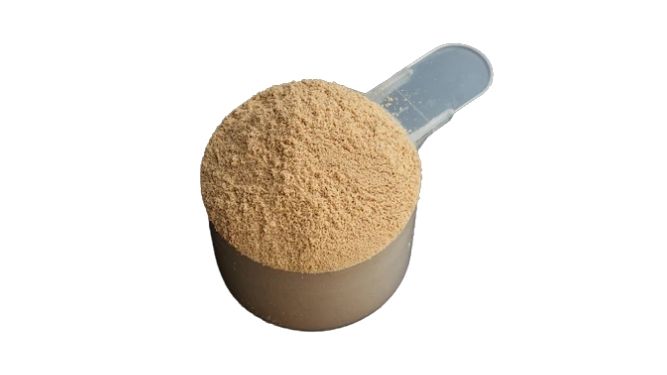Whey proteins refer to the translucent liquid part of the milk which is obtained in the process of cheese manufacturing. When cheese is produced, the fatty parts of the milk get separated from which whey proteins are procured as a byproduct.
Whey proteins are made up of nitrogen-containing substances which are formed by amino acids. They are considered as a complete protein because they provide 09 essential amino acids that our body cannot synthesize. In addition to these, whey proteins are rich in minerals and vitamins.
Whey proteins are separated and purified by using various techniques to obtain different concentrations, depending on the end composition desired. They can vary in content of protein, lactose, carbohydrates, minerals, and fat.
Major forms of whey protein are:
- Whey protein concentrate – The protein concentration may vary from 25 – 89 % with 80% concentration being mostly available. It has some lactose, minerals, and fat which can vary with protein concentration.
- Whey protein isolate – This has the purest form of protein concentration which may range from 90 – 95 % with negligible lactose, minerals, and fat.
- Whey protein hydrolysate – It is a “predigested” form of whey protein that has a faster absorption than other forms of whey protein. The protein concentration may be variable and lactose, minerals, and fat may vary with protein concentration.
What are the Steps to Make Whey Protein?
The milk undergoes a number of processes to make whey protein which are as follows:
Step 1 – Milk Standardization
The first step of whey protein production is bringing the milk to the production unit and testing for the purity, quality, proper storage temperature, and the ratio of protein to fat. The standardization also ensures the milk obtained should have around 3.5% protein, 4% fat, and 4.6% lactose.
Step 2 – Coagulation
Coagulation is done to separate casein (milk solids) from liquid whey. Enzymes, mostly rennet are added which separates the milk into two particles – the liquid particles (whey) and solid particles (casein).
After separation, the solid particles are collected and processed as cheese. The whey is drained from the casein and then stored and transported for further purification to remove fats, carbs, water, and minerals.
Post-coagulation, the milk obtained has 20% whey and 80% casein.
Step 3 – Pasteurization
The pasteurization is done to ensure that there are no bacteria breeding in the milk. The liquid whey is pasteurized at 72 degrees centigrade and then instantly cooled at 4 degrees centigrade to ensure that the whey is free of harmful pathogens.
Step 4 – Ultrafiltration
Casein fines are always present in the liquid whey. So, the liquid whey undergoes filtration using a variety of methods, such as porous membrane filtration or ion exchange, where the whey proteins and other nutrients are selectively allowed to pass through to filter out remaining fine casein.
The current process separates fats and lactose from the liquid solution.
Step 5 – Dial Filtration
This step is done to further increase the protein purity to 90% or higher. In this, water is added to the liquid whey during filtration to wash out more lactose and fats.
Step 6 – Evaporation and Crystallization
After the dial-filtration, the whey product is sent to the evaporators where water is evaporated to further increase the concentration of whey protein and nutrients.
After evaporation, the concentrate is flash cooled rapidly to 30 – 40 degrees centigrade to initiate nucleation of lactose crystals. Then the lactose crystal is kept in specially-designed crystallization tanks for 4 – 8 hours to achieve a uniform distribution of small lactose crystals. This prevents the final product from absorbing or attracting moisture from the air.
Step 7 – Spray Drying
Finally, spray drying is used to produce a product with greater than 95% total solids or to reduce the moisture content to a maximum of 4 % before packaging. This step is done to prevent the growth of microorganisms in order to protect the consumer and to better preserve the food product.
Step 8 – Packaging
After drying, the powdered whey product is sent to the Permeate Powder Storage, where the powdered whey protein product is then bagged.
The Importance of Quality Testing of Milk
Milk is considered one of the highly perishable foods because of its higher moisture content which makes it a great growing medium for microorganisms. Its quality starts deteriorating during handling, processing, and storage because of enzymatic and microbial activity.
Besides, milk and dairy product adulteration is a major global concern. Milk processing sectors and suppliers add different adulterants and preservatives for increasing the shelf life and to get rid of the quick deterioration of milk.
Thus to get rid of these problems, continuous monitoring of the quality of milk is so important.
For this, a milk processor or handler can only assure the quality of milk through certain basic quality tests at various stages of the production of whey protein.
References:
https://dairyprocessinghandbook.tetrapak.com/chapter/whey-processing
https://www.researchgate.net/publication/313715199_Whey_protein

